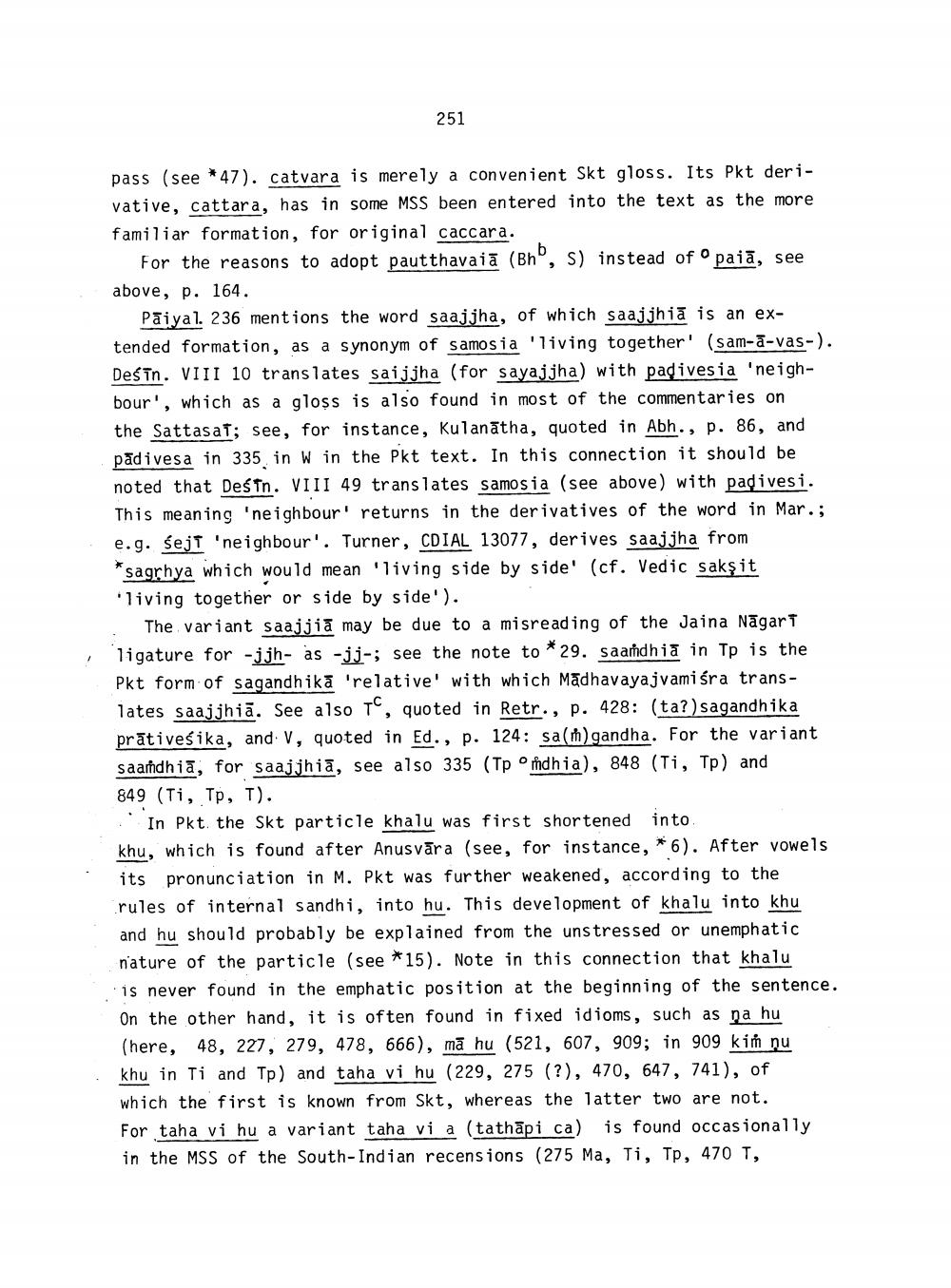________________
251
pass (see *47). catvara is merely a convenient Skt gloss. Its Pkt derivative, cattara, has in some MSS been entered into the text as the more familiar formation, for original caccara.
For the reasons to adopt pautthavai ā (Bho, s) instead of paiā, see above, p. 164.
Pāiyal. 236 mentions the word saajjha, of which saajjhia is an extended formation, as a synonym of samosia 'living together' (sam-a-vas-). Deś in. VIII 10 translates saijjha (for sayajjha) with padivesia 'neighbour', which as a gloss is also found in most of the commentaries on the Sattasat; see, for instance, Kulanātha, quoted in Abh., p. 86, and pādivesa in 335 in W in the Pkt text. In this connection it should be noted that Deśfn. VIII 49 translates samosia (see above) with paçivesi. This meaning 'neighbour' returns in the derivatives of the word in Mar.; e.g. sejt 'neighbour'. Turner, CDIAL 13077, derives saajjha from * sagrhya which would mean 'living side by side' (cf. Vedic sakşit
living together or side by side'). . The variant saajjiā may be due to a misreading of the Jaina Nāgari ligature for -jjh- as -jj-; see the note to * 29. saandhia in Tp is the Pkt form of sagandhika 'relative' with which Madhavayajvamiśra translates saajjhiā. See also T, quoted in Retr., p. 428: (ta?) sagandhika prātivesika, and. V, quoted in Ed., p. 124: sam) gandha. For the variant saandhia, for saajjhia, see also 335 (Tp dhia), 848 (Ti, Tp) and 849 (Ti, Tp, I).
In Pkt. the Skt particle khalu was first shortened into khu, which is found after Anusvāra (see, for instance, *6). After vowels its pronunciation in M. Pkt was further weakened, according to the rules of internal sandhi, into hu. This development of khalu into khu and hu should probably be explained from the unstressed or unemphatic nature of the particle (see *15). Note in this connection that khalu is never found in the emphatic position at the beginning of the sentence. On the other hand, it is often found in fixed idioms, such as na hu (here, 48, 227, 279, 478, 666), mā hu (521, 607, 909; in 909 kiń nu khu in Ti and Tp) and taha vi hu (229, 275 (?), 470, 647, 741), of which the first is known from Skt, whereas the latter two are not. For taha vi hu a variant taha vi a tathāpi ca) is found occasionally in the MSS of the South-Indian recensions (275 Ma, Ti, Tp, 470 T,




